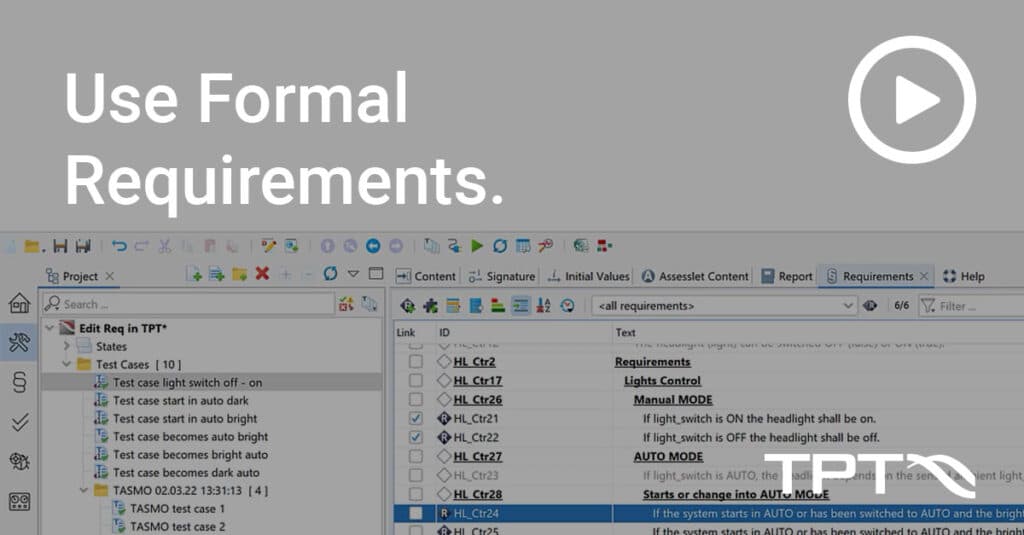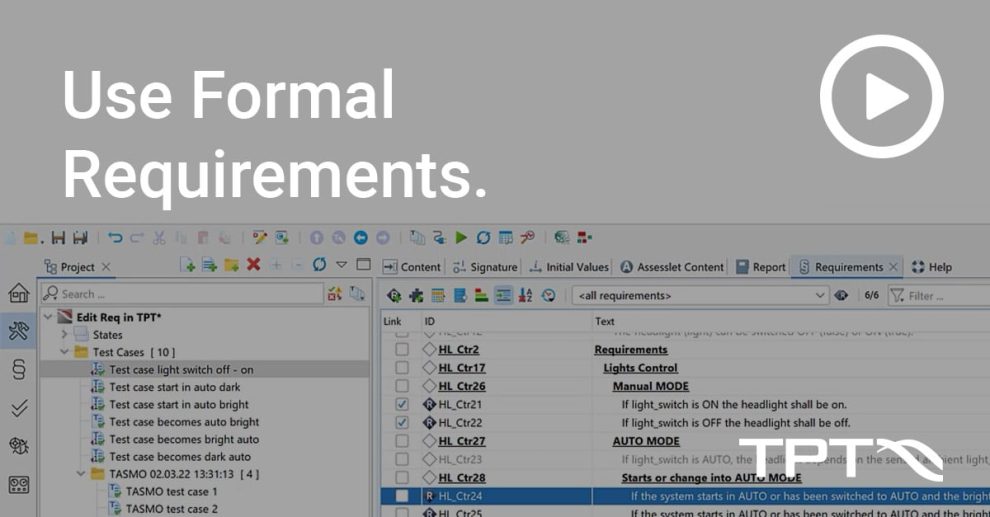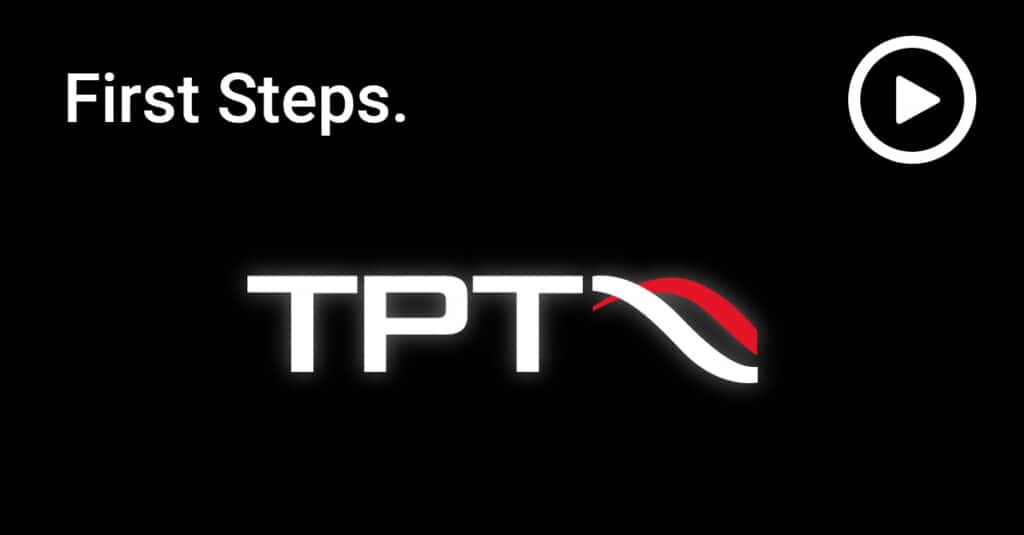
With TPT you can import requirements and/or test cases from the most common application lifecycle management tools (e.g. Codebeamer, Quality Manager, Polarion, Doors, Excel) or via the ReqIf standard and link them to the test case implementation. But that was not enough for us: with TPT18 you can also add a formal notation for each requirement. You can have the so-called Formal Requirements checked automatically during each test run. The results are of course displayed in the test report for each requirement.
For the creation of formal requirements, we have defined a clear but very comprehensive language set. The advantage of this type of notation is that they are understood identically by all readers with knowledge of the same vocabulary. Thus, the formal requirements are free of interpretation. Additional work due to misinterpretation can thus be avoided and this saves money in the development.
The derivation of formal requirements from natural language requirements can largely be understood as a consistent reformulation and refinement of existing requirements.
In our new tutorial we explain how you can use this feature in TPT 18.




